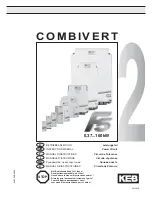
Sawtooth Wave Properties
A Sawtooth Wave makes use of the DSR 100-15's arbitrary waveform generator to generate the desired waveform.
Select the Sawtooth button from the Add Waveform drop-down when you need to create an audio-frequency sinusoidal
waveform (DC to 20 kHz).
Set the following properties to specify the characteristics of the sawtooth wave to be produced at the amplifier output:
Amplitude:
The Start Amplitude and End Amplitude properties determine the height of the sawtooth wave from the zero-
crossing point to the peak value, measured in volts. Amplitude can be defined using the unit Volts peak (Vp), Volts peak-
to-peak (Vpp) or Volts root-mean-square (Vrms). When the unit of measure is changed, the DSR 100-15 automatically
converts the property's value to the new unit of measure. The units of measure used for Start Amplitude and End
Amplitude do not need to be the same.
The values for both Start and End Amplitude can be positive or negative, and the allowable range for these values will be
determined by the DSR 100-15 based on the System Calibration settings (for more information, see the topic
"System
Calibration"
). The default allowable range is +/-200Vp (with system gain set to 20). When a value outside of the allowable
range is entered, the input box will turn red and an error message will be displayed.
Amplitude Sweep Type:
A Sweep can be Linear, Logarithmic or Exponential. Choose the desired sweep type from the
drop-down.
Frequency:
The Start Frequency and End Frequency properties determine the frequency of the sawtooth wave in cycles
per second (Hertz). Frequency can be defined using Hertz (Hz) or Kilohertz (kHz) as the unit of measure. When the unit of
measure is changed, the DSR 100-15 automatically converts the property's value to the new unit of measure. The units of
measure used for Start Frequency and End Frequency do not need to be the same.
The allowable range for Start and End Frequency is 0.1 Hz to 20 kHz. When a value outside of the allowable range is
entered, the input box will turn red and an error message will be displayed.
Frequency Sweep Type:
A Sweep can be Linear, Logarithmic or Exponential. Choose the desired sweep type from the
drop-down.
DC Offset:
The Start Offset and End Offset properties supply a constant positive or negative DC voltage on the sawtooth
Summary of Contents for DSR 100-15
Page 9: ......
Page 18: ...useful for testing a sequence before generating output ...
















































